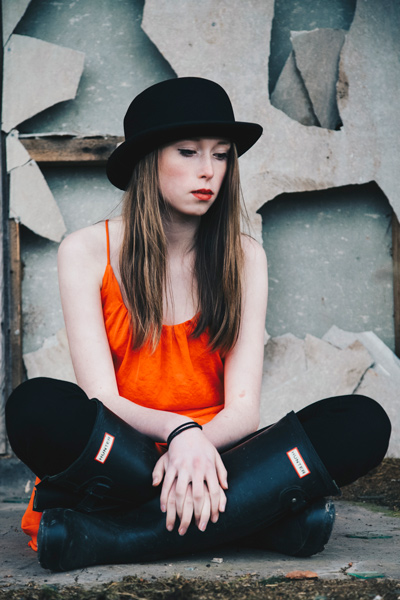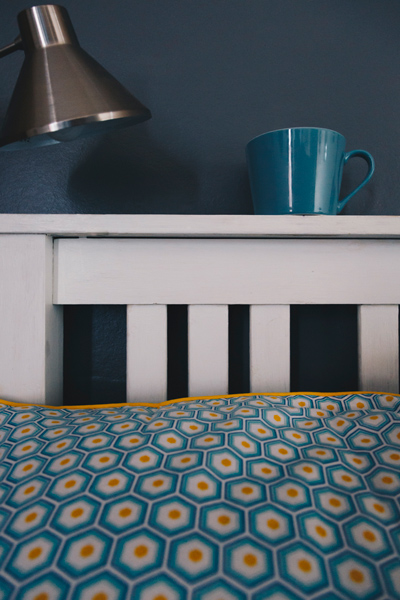Are you confused about which color combinations to include in your photographs? Using color in photography correctly helps draw attention to your subject, and therefore creates a powerful visual effect that is pleasing to the eye. The six tips in this article will help you to understand how to use color in photography and take even better photos!
1. Use The Color Wheel To Obtain Contrasting Colors
To use color in photography effectively it helps to have an understanding of the color wheel. This is a useful tool to illustrate the basic idea of how different color combinations work with each other.
Look at the color wheel above to find complementary colors. For example, if you want to find a color that works well with red, find the color red on the color wheel, then look at which color is directly opposite.
In the case of red, the complementary color is green. These complementary colors are highly contrasting which can create a striking vibrant image.
In this image, the saturated red and green colors create a strong contrast.
Orange and blue are also complimentary colors on the color wheel. The pale blue background helps to bring out the orange of the girl’s top and her lipstick. This captures the attention of the viewer and draws you into the image.
The colors purple and yellow are another example of contrasting colors. In this image, the use of these colors has made the flowers look more striking and visually appealing.
2. Find A Pop Of Color
A pop of color is a bright splash of color that stands out against the other colors in a scene.
Including a pop of color in your image will have a powerful impact because it creates a strong focal point that instantly catches the eye.
The little boy in the sand dunes wearing a bright yellow jacket draws the viewer’s eye through the grass in this shot. Capturing colors such as yellow and red are recommended as they are both powerful and alluring colors.
Whenever you are taking photos, keep an eye out for neutral colored scenes that have a pop of color in them that you could capture in your composition.
3. Use Color To Create An Abstract Photo
An abstract image tends to have only a few visual components. Color, shape, and texture are the highly effective elements to include in your photos. Use them to create a colorful, abstract image with huge visual appeal.
To create a good abstract image, look for blocks of color that form strong shapes. Also, try to include plenty of colorful, empty or negative space. Colors and the quality of the light are the main elements to create a striking abstract image
In this image where there is only one color, texture, shape, and light are being used to draw the viewer in. Look out for interesting shapes that you can capture.
Again, using very saturated colors makes for a striking impact. This is nicely illustrated by these colorful shapes found in some plastic buckets, creating a wonderfully abstract and minimalistic feel.
4. Use Bright Colorful Backgrounds
Bright colorful backgrounds make a great backdrop for your photos. If you can find a colorful wall or building then think about using this for your image.
A colorful wall looks great on its own but including a person in the shot adds another dimension to the image. This is partly because the human subject gives the scene a sense of scale, but also because it adds an element of human interest, which is easier for the viewer to engage with.
You don’t need to use a wall to get a striking background color. For example, this dandelion seed head was held up to the sky to create a bright backdrop, with bright color attracting the viewer’s attention.
5. Understand Dominant And Receding Colors
In photography, the dominant colors are the warm colors, e.g. red, yellow, and orange. These colors are considered dominant because they reach our eyes before the cooler colors. The cooler colors are the receding colors, e.g. blue, green and purple.
The warm colors are dominant because they demand your attention first, leaving the receding colors to fade into the background more. In this image, the flower grabs your attention, but it’s only fractionally later that you notice the watering can.
You can create visual depth in an image by using dominant and receding color combinations. For example, in the photo below, the warmer color of the lady’s hair and the horizontal strips of orange in the image jump forward as they capture your eye first.
The more saturated the red, orange or yellow is, the more dominant the color will be.
6. Use Color In The Rule Of Thirds Composition
The rule of thirds is a compositional tool that divides a scene into three horizontal or vertical parts, or a mixture of both. So, to make using the rule of thirds more convenient, turn on the grid overlay in your camera settings, giving you a visual guide you can use to line up the elements in the scene.
Split the scene into thirds using horizontal blocks of color or patterns, creating a powerful and well-balanced image.
The thirds rule works both horizontally and vertically and is not limited to the use of color. However, using this compositional tool with color can be fun and highly rewarding.
Color In Photography: Summary
Now you have an understanding of color based on the use of the color wheel, and you also know how to create contrast in your images, and how to use dominant and receding colors to control the order in which your viewer notices the elements in your photos.
These six color photography tips will open up your creativity and, as a result, enable you to use color in photography to create compositions with maximum visual appeal. Finally, the world is full of color – now it’s up to you to capture it!


















